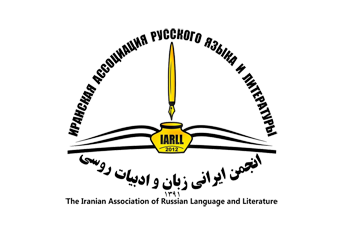COMPOUND PARTICLES WITH THE COMPONENT “БЫ” IN RUSSIAN AND WAYS OF EXPRESSING THEM IN PERSIAN
DOI:
https://doi.org/10.61186/iarll.25.7Keywords:
составные частицы, частица бы, перевод, русский язык, персидский языкAbstract
The study is devoted to the study of compound particles with the component “бы” in the Russian language and the ways of expressing them in the Persian language, as well as to the analysis of the effectiveness of dictionaries in representing the exact equivalents of these particles in the Persian language. The analysis of the equivalence of Russian particles in the Persian language is made on the basis of 196 examples collected from translations of Russian works into Persian. The results generally indicate that dictionaries are ineffective at accurately translating particles. This is confirmed by the fact that the equivalents proposed by the authors of the article only in one case coincide with the equivalents proposed in the dictionaries. As a result of the analysis of particle equivalents in different sources and the selection of the most suitable equivalent, the article proposes 31 equivalents for 15 particles, which indicates the polysemy of these particles and the variety of linguistic means of the Persian language to convey their meaning.
Extended abstract:
This study examines compound particles in the Russian language that feature the component “бы,” exploring their expressions in Persian and evaluating the effectiveness of Russian-Persian dictionaries in providing accurate equivalents for these particles. The analysis is based on 196 examples collected from translations of Russian literary works into Persian. During the research, we compared the equivalents found in these translations with those provided in three Russian-Persian dictionaries: by G.A. Voskanyan, S.D. Klevtsova, and I.K. Ovchinnikova. Additionally, we referenced the *Descriptive Dictionary of Russian Particles* to identify the most accurate and contextually appropriate equivalents. These equivalents were then tested for accuracy using examples primarily sourced from the National Corpus of the Russian Language and the *Dictionary of Russian Particles*.
The findings reveal significant differences between Russian and Persian in terms of how particles are classified and studied. In Russian, particles are thoroughly analyzed and occupy a well-defined position within the parts of speech system. In contrast, Persian linguists often debate whether particles should be classified as an independent part of speech, reflecting a lack of consensus and limited research on the topic. This discrepancy poses a major challenge for translation, as particles are inherently abstract in meaning and highly dependent on context. These challenges are further compounded by the limited study of particles in Persian and the inadequacy of Russian-Persian dictionaries in providing accurate equivalents.
The complexity of translating particles increases when they consist of multiple components. Among multi-part particles in Russian, those containing the element “бы” are particularly noteworthy due to their high frequency of use and the nuanced meanings they convey. Key semantic functions of these particles include expressing desirability, uncertain assumptions, and uncertainty. Their modular structure and contextual dependency make them especially challenging for Iranian translators and students. In the absence of comparative studies in this area, Russian-Persian dictionaries remain the primary resource for translating these particles. However, our analysis demonstrates that these dictionaries are largely ineffective. Only one of the equivalents we identified aligned with dictionary suggestions, and many particles were entirely absent from the dictionaries, likely due to their contextual nature.
Through a detailed analysis of particle equivalents across various sources, we have proposed 31 equivalents for 15 compound particles containing “бы.” These equivalents highlight the polysemy of these particles and the diverse linguistic resources available in Persian for conveying their meanings. However, it is important to emphasize that these proposed equivalents are not definitive or absolute. The translation of particles is highly context-dependent, and their meanings may vary depending on the specific linguistic and situational context in which they are used.
This study underscores the need for further research into Russian and Persian particles, as well as the development of more comprehensive and context-sensitive Russian-Persian dictionaries. By addressing these gaps, future studies can provide more reliable resources for translators and students, facilitating more accurate and nuanced translations of Russian compound particles into Persian.
Downloads
Published
How to Cite
Issue
Section
License
Copyright (c) 2025 Issledovatel'skiy Zhurnal Russkogo Yazyka I Literatury

This work is licensed under a Creative Commons Attribution 4.0 International License.
![]()
"Creative Commons Attribution 4.0 International (CC-BY 4.0)"


